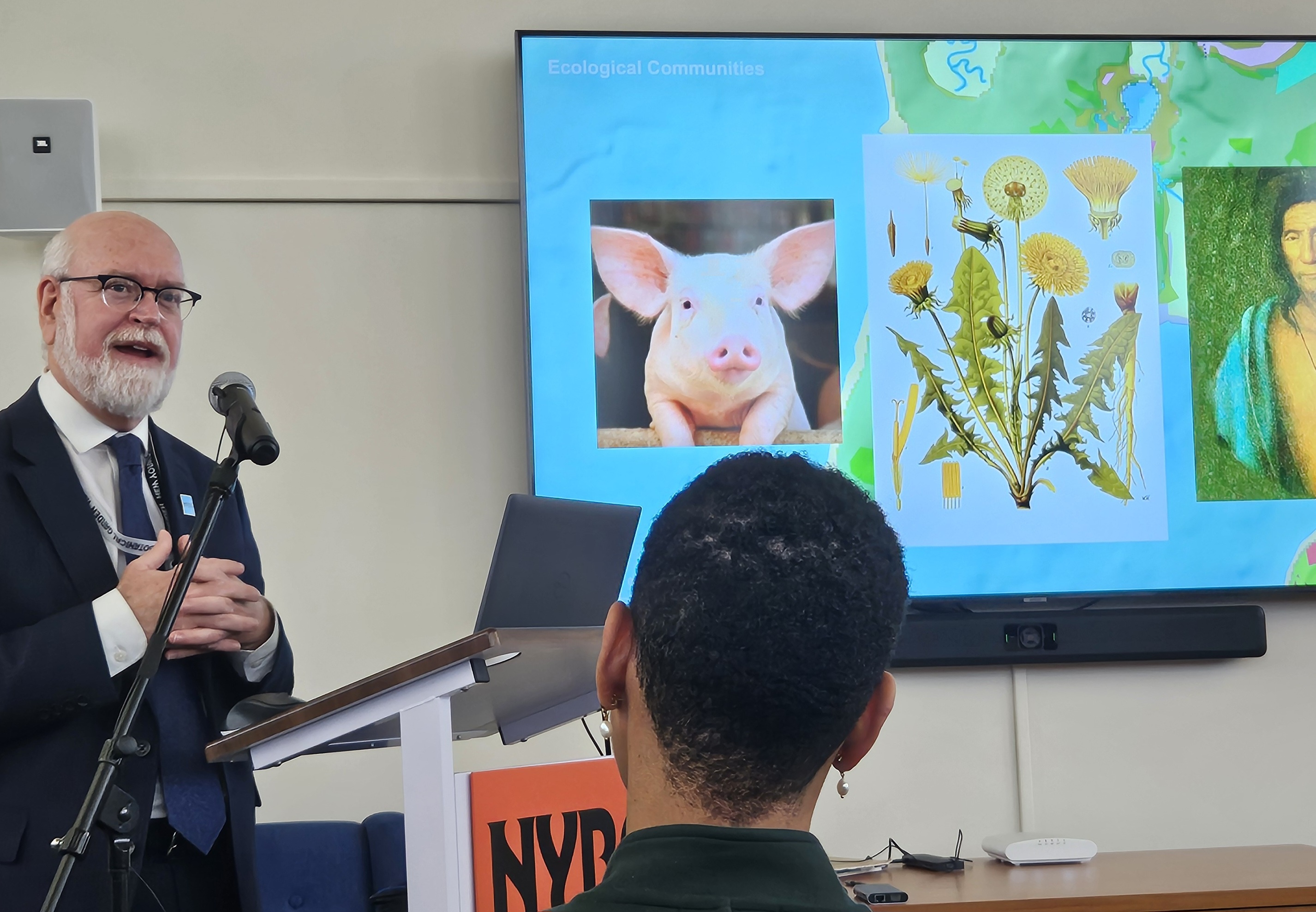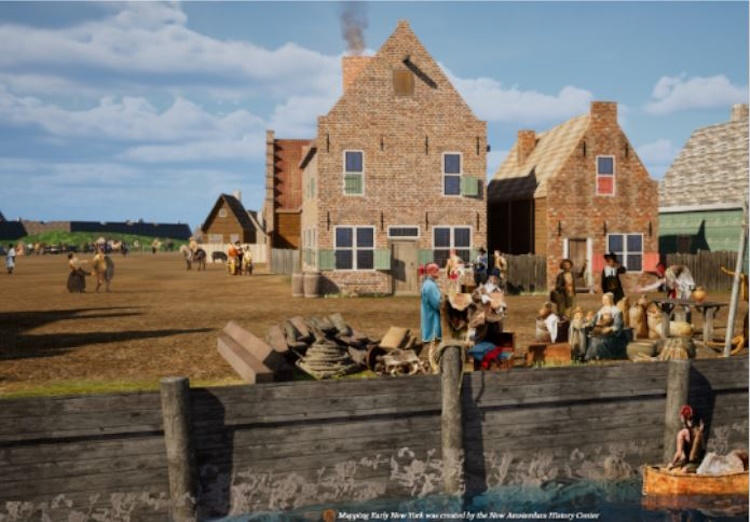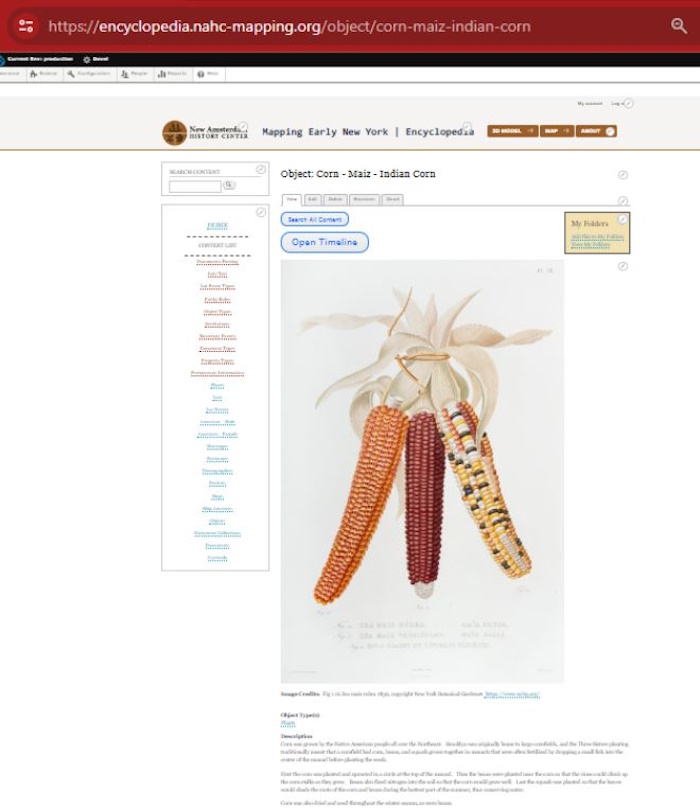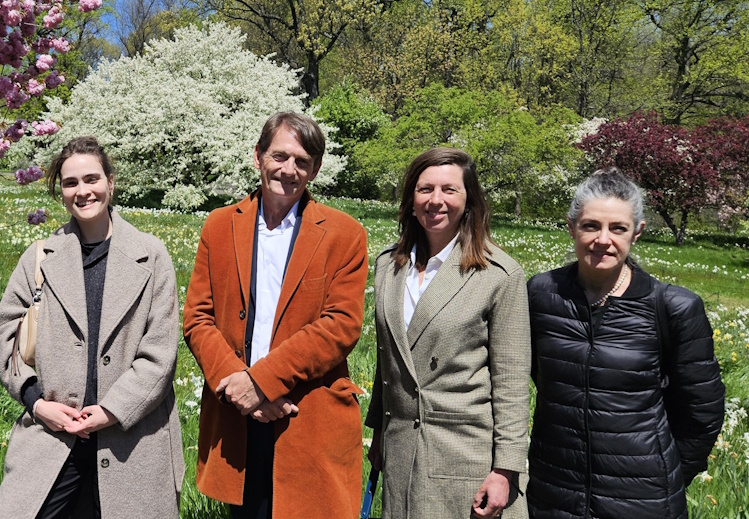Spring Lecture at the New York Botanical Garden
Co-presented by the New Amsterdam History Center and NYBG-Humanities Institute

On April 25, a special lecture program entitled “Peaches, Pears, and Purslane – Recreating Dutch Gardens in 17th Century New Amsterdam,” brought a large group of historians, plant researchers, and a generally interested public together at the New York Botanical Garden’s LuEsther T. Mertz Library for a remarkable morning presentation. The main speakers were Toya Dubin, Director of the New Amsterdam History Center’s Mapping Early New York Project, and Eric Sanderson, the inaugural Vice President for Botanical Science and Director of the Center for Conservation & Restoration Ecology at NYBG and author of Mannahatta: A Natural History of New York City (2009), with Rhonda Evans, Director of the Mertz Library, as main host of the morning.

Opening the morning’s proceedings with some important highlights surrounding Earth Day, Mauricio Diazgranados, Chief Science Officer and Dean of NYBG Science, extended a special welcome to the New Amsterdam History Center and to representatives from the Consulate General of the Netherlands, Cultural Attaché Monique Ruhe (who unfortunately could not come due to illness), Robert Kloos, Deputy Head Press & Cultural Affairs, and some of their distinguished team. He handed the mic to Lucas Mertehikian, Director of the Humanities Institute, who, after reciting the Land Acknowledgement, spoke about the importance of such broad, interdisciplinary events for future research and programming about the arts and sciences of (plant) history.
Rhonda then took the stage: “We are so glad to see you all here for this program co-presented with the New Amsterdam History Center. Thank you to Executive Director Esme Berg, Director Michael Cavanaugh, and their enthusiastic team!” Rhonda then offered a sneak preview of some of the library’s extraordinary works dating back four centuries, including Herbals, Botanical Treatises, and Garden print books that were published in the Netherlands in the late 16th- and 17th- centuries. “We picked these works because they would have been used in the Dutch households in New Amsterdam, especially Dodoens’ Cruydboeck, offering crucial medical botanical information long before the days of Urgent Care!… In well-to-do New Amsterdam homes, two books would have graced the table: an Herbal and the Bible, to ensure both one’s physical and spiritual health.”
Eric Sanderson was the first speaker, offering a fascinating illustrated overview of the “deep history” of the land before the Dutch arrived – major changes in land formations going back hundreds of millions of years up to about 18,000 years ago with the coastline of Manhattan taking its shape, and finishing with his beautiful 1609 Mannahatta images. His presentation, entitled Before and After the Dutch, explained how the importation of animals, such as pigs that roamed the streets of New Amsterdam, other livestock, in addition to people and plants drastically changed the land. It was a very fitting introduction to Toya’s painstaking reconstruction of the city of New Amsterdam in 3D dating to 1660.

By incorporating the latest seed and pollen research based on paleobotanist Joel Grossman’s key chapter, “Archaeological Indices of Environmental Change and Colonial Ethnobotany in 17th Century Dutch New Amsterdam,” in Environmental History of the Hudson River (edited by Robert E. Henshaw, Albany, c. 2011), the 3D model provides new insights on the rapidly changing urban ecology of early-17th-century Manhattan and its horticultural traditions.
Pointing at the pivotal importance of the 1660 census created by the Schout of New Amsterdam Nicasius de Sille for her Mapping of Early New York research, Toya focused on the layout of the Dutch West India Company Garden. Laid out in geometrical shape with rectilinear beds following Dutch garden tradition, it was planted for sustenance first, and only secondly for aesthetic purpose. In Manhattan’s Dutch gardens one could find a mix of both native and newly imported plant materials showing the influence of Native American planting traditions, most strikingly the use of Three Sisters planting (corn, beans, squash). Peach trees, Pear trees, grapevines, pumpkins, white cabbage, collard greens, spinach, and both European and Native American herbs are shown being tended by both enslaved Africans and Europeans.

The need for food production to support the crowded urban landscape of New Amsterdam crowded out Indigenous people and their growing methods, and forced free Africans to use intensive agriculture.
One of the highlights of Toya’s story was the important role of women in New Amsterdam, exemplified by Sara Kierstede, who kept a medicinal garden in the plot behind her house, giving rise to Kierstede’s remedy, an herbal ointment that continued to be sold in the 1850s. She also ran a crucial trading business in New Amsterdam in her unofficial role as translator with the Indigenous people, who traded venison, firewood, and corn in front of her house near the dock.

Showing how the entries for many plants in the Encyclopedia had been updated recently with images contributed by the New York Botanical Garden itself, Toya added: “the New Amsterdam History Center hopes that students and scientists at the NYBG will utilize the Encyclopedia in their work, and consider contributing articles or entries in future.”

Following the presentations, a lively Q&A with the audience demonstrated how many questions remain to be answered and how different in tone and intent this 400-year anniversary of the settlement of New Amsterdam is from the celebrations held in 2009 honoring the arrival of Henry Hudson. Eric and Toya’s responses showed that today’s conversations around the topic are broader and more sensitive: “It allows for new voices to share their knowledge and experiences, resulting in more honest story telling.”

Closing the morning’s program, Rhonda thanked the speakers and invited all visitors to explore the rare 17th-century Dutch herbals and horticultural books on display, as well as the living plant collections outside. The subsequent walking tour of the Garden’s premises ended on Daffodil Hill. There – surrounded by thousands of daffodils and flowering Cherry trees – New York Botanical Garden’s exceptional staff, including Claire Lyman and Kristine Paulus, provided a detailed explanation of the more than one-hundred-year history of Daffodil Hill and its matchless bulbous plant collections.
For further information about related exhibitions and programs in New York this year, please see:
New York Before New York: The Castello Plan of New Amsterdam | New-York Historical Society (nyhistory.org)
FUTURE 400 – DutchCultureUSA




